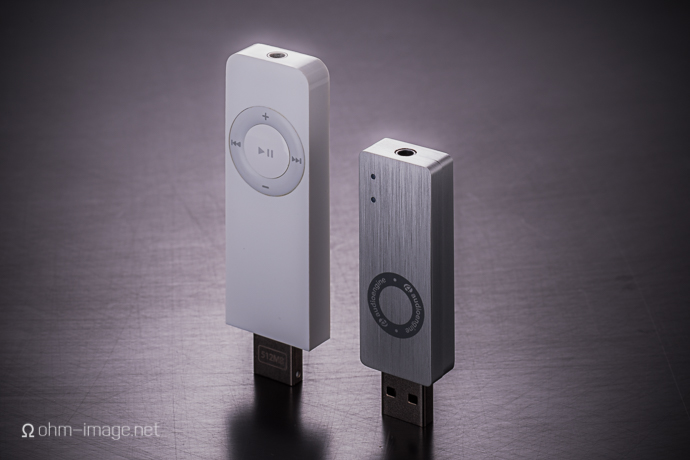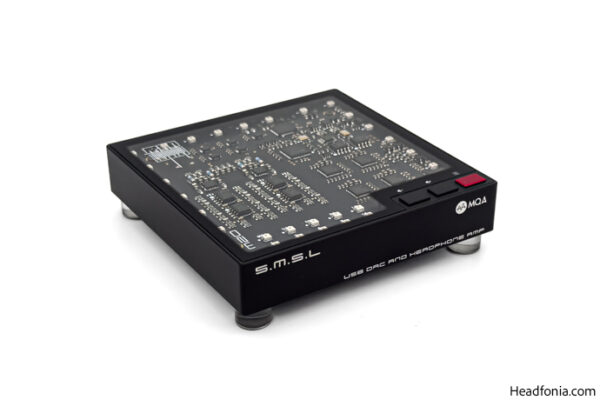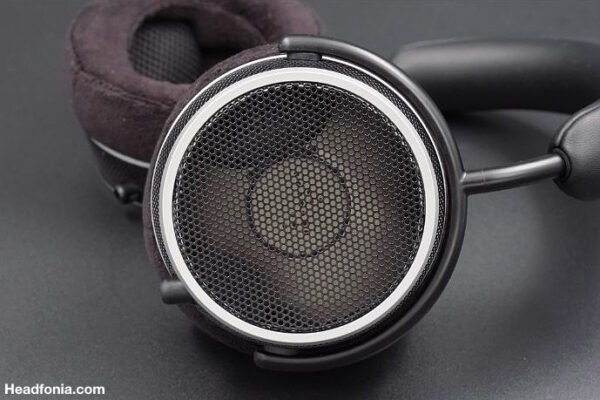Disclaimer: Audio Engine sent the D3 for the purposes of this review. I paid import duties and nothing else. Currently, the D3 goes for 149$. You can find out more here: D3 24-bit DAC.
Knowing that my favourite audiophile toy is the simple, and ancient, iPod shuffle 512MB, you can probably guess at how this review is gonna go. The Audioengine D3 is tiny, metal, and oh-so-contemporary-iPod-shuffle. Except that it’s a DAC, not an MP3 player.
You plug it into a computer. You then plug an amp, or a pair of headphones, into it. You play your music. It’s that simple. If you have an iMac like I do, you’ll find that the plug, not the play, requires a reach around. That’s not Audio Engine’s fault. It is, however, why I opted not to take real-world use photos.
I hope what I took will suffice.
Features
By eliminating switches, and volume pots, and pretty much everything but the jack makes the D3 superbly easy to use. And that, my friends, is its best feature. But at the same time, it plugging and playing just like that presents a problem. While compact and easy to use, the D3 isn’t 100% stable in any USB port. It wobbles. If like me, you have an iMac, you should probably pick up a USB extension. Apart from that, it does all the usual stuff, and does it clad in brushed aluminum.
What keeps it tiny is its lack of battery. What keeps it from working straight from an iPhone or iPad (through a Camera Connexion Kit), is its lack of a battery-powered-DAC. It draws too much power. Which means: if you’ve got the Jones for an external DAC for your iDevice, you’ll have to invest in a powered hub, or check out battery-powered options from Cypher Labs, Fostex, and others.
When spitting sampling rates higher than 48kHz, a blue LED lights up. Input power is indicated by a green LED. Thankfully, neither LED is too bright. In fact, they are mellow, and look great with the brushed aluminum.
Package and Accessories
Every Audioengine product I have opened comes with smudges, fingerprints, and an ‘inspected’ sign. The thumb prints may be factory seals of approval. I’d rather there were none. Certainly at its introductory price of 189$, I’d have expected fewer of these seals. At its current price of 150$, my feelings are ambivalent. Sure, I’d love Audioengine to, with a pristine package, prove to us that they care for perfection, but we are talking about a technological tour de force here. Tiny, powerful, good-sounding. The D3 performs based on those merits, not on satellite expectations.
Cooler than a fingerprint is the nice felt carrying case that fits the D3 like a glove. It keeps the D3 safe, and you can even mash the the world’s greatest MP3 player inside. And in keeping things simple and still covering most/all bases, Audioengine have thrown in a pretty good 3,5mm – 6,3mm adapter. It’s about 23 cm long, flexible, and sturdy, making the D3 play nice with every industry standard single-ended headphone out there.
Amp and DAC performance after the jump:










dalethorn
I didn’t do the quality of analysis that’s in this review with my D3, but I found the sound to be smooth and mellow, so that agrees with Nathan’s experience with his sample.
ohm image
Agreed. 😉
George Lai
I’ve always liked their products and the D1 and A2+ are still my to-go on my iMac. Not entirely relevant to this review, I know.
dalethorn
The D1 is like the D3, but with a volume knob and extra outputs. Also bigger, and doesn’t sound quite as good IMO.
ohm image
WAY bigger. The extra outputs really put the D1 in a different utility bracket.
ohm image
I would imagine that the two are quite alike. Actually, I will be doing the D1 as well. Also, it appears as if cool things are coming for the D3.